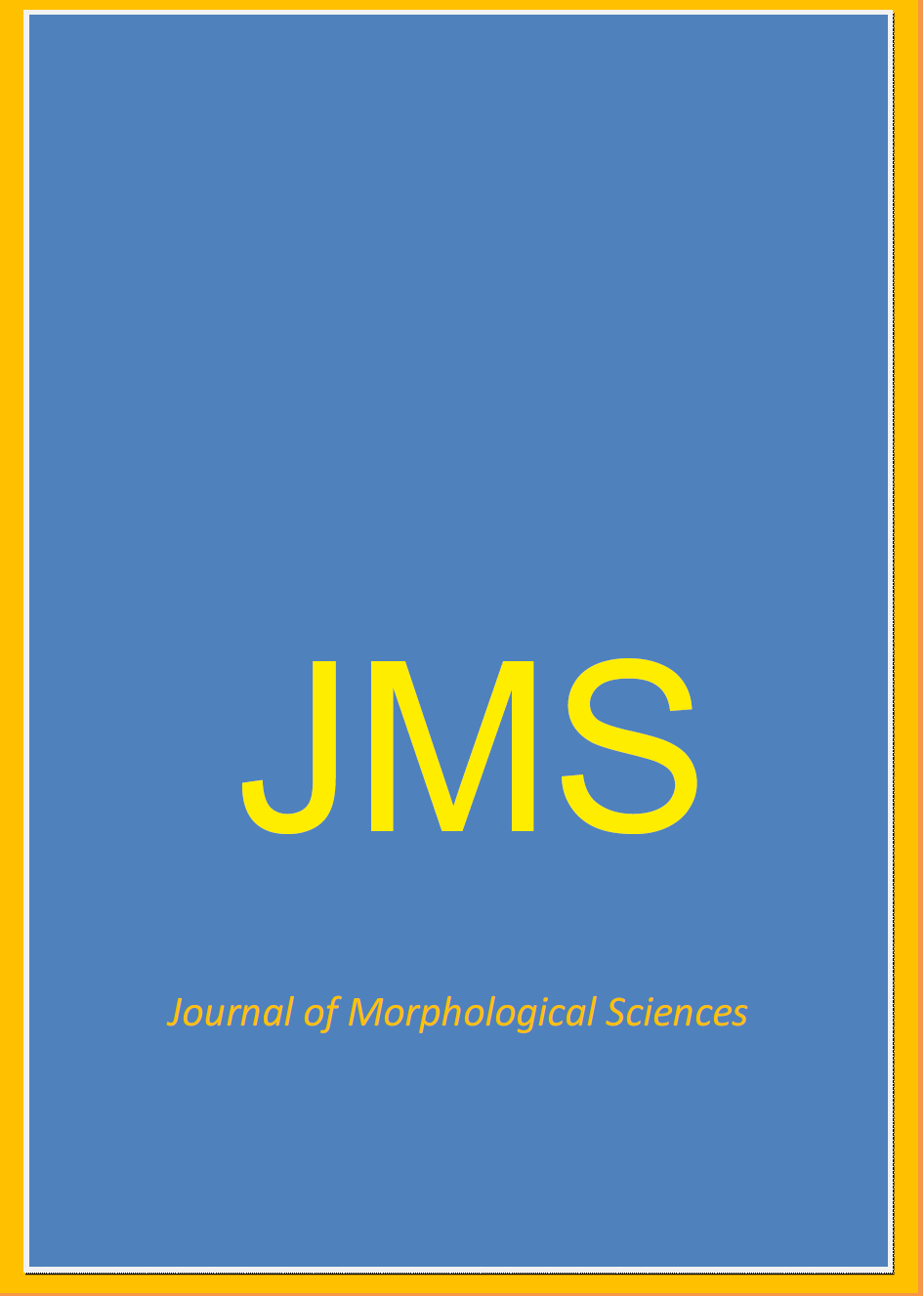RELATION OF ENDOMETRIAL PATHOLOGICAL CHANGES WITH ENDOCRINE DISORDERS AND METABOLIC SYNDROME
Abstract
Endometrial hyperplasia (EH) is an abnormal proliferation of endometrial glands and stroma and is associated with an increased risk of endometrial cancer (EC). Risk factors such as obesity, chronic anovulation, late menopause, hypertension, and diabetes lead to an increased risk of EH and EC. Aim: to determine the association of pathological changes in the endometrium with endocrine disorders and metabolic syndrome in women in peri and postmenopause. This study including a total of 139 patients in peri and postmenopause. The examined group consisted of 104 women with fractional explorative curettage due to a medical indication and was divided into two subgroups: peri and postmenopausal. The control group included 35 healthy women. Anamnestic data, body weight, height, blood pressure measurement, were taken from all patients, and the following laboratory parameters were determined: glucose, TSH, thyroxine, glycosylated hemoglobin (HbA1c), and Vitamin D . The presence of metabolic syndrome (MetS) according to its diagnostic criteria was also determined. In our study, significance was found in the comparison of the examined and the control group (p = 0.0001) in addition to the significantly higher BMI in the examined group. The comparison also indicated the existence of a significant difference in the level of glycemia in addition to a significantly higher level in the examined group (p = 0.0001). The statistical analysis did not indicate a significant difference between the two subgroups of the examined group, nor between the examined and the control group in terms of TSH, thyroxine and HbA1c levels. The value of vit. D was significantly higher in the control than in the study group (p = 0.0001). The analysis showed that patients with fractional explorative curettage had 4.982 times [OR = 4.982 (2.06–12.02) 99% CI] significantly more often MetS compared to women in the control group. Patients in the examined group had a significantly higher BMI, glycemia, and more frequent presence of MetS than those in the control group.
Keywords: endometrium, risk factors, fractional explorative curettage, metabolic syndrome
https://doi.org/10.55302/JMS2142156k
References
2. “What are the symptoms of menopause?â€
(htpp://nichd.nih.gov/health/topics/menopause/conditioninfo/Pages/symptoms.aspx). Eunice Kennedy
Shriver National Institute of Child Health and Human Development.
http://www.nichd.nih.gov/health/topics/menopause/conditioninfo/Pages/symptoms.aspx). [Accessed
30.09.2020]
3. WHO Scientific Group on Research on the Menopause in the 1990s. WHO Technical Report Series. Geneva,
Switzerland: WHO, 1996; p.866.
4. Heller DS. Pathologic basis for abnormal uterine bleeding with organic uterine pathologies. Menopause.
2011;18(4):412-5
5. Li XC, Song WJ. Endometrial intraepithelial neoplasia (EIN) in endometrial biopsy specimens categorized by
the 1994 World Health Organization classification for endometrial hyperplasia. Asian Pac J Cancer Prev. 2013;
14, 5935-9
6. Toppozada MK, Ismail AA, Hamed RS, Ahmed KS, el-Faras A. Progesterone challenge test and estrogen
assays in menopausal women with endometrial adenomatous hyperplasia. Int J Gynaecol Obstet 1988; 26(1):
115-9.
7. Kapali M, Agaram NP, Dabbs D, et al. Routine endometrial sampling of asymptomatic premenopausal
women shedding normal endometrial cells in Papanicolaou tests is not cost effective. Cancer 2007;111(1):26-
33.
8. Ricci E, Moroni S, Parazzini F, et al. Risk factors for endometrial hyperplasia: results from a case-control
study. Int J Gynecol Cancer 2002;12(3):257-60.
9. "Defining Cancer" (http://www.cancer.gov/cancertopics/cancerlibrary/what-is-cancer). National Cancer
Institute. 17 September 2007. ПриÑтапено на 10.04.2020.
10. ÐнтовÑка Ð’, СтојовÑки Ðœ. " Ендометријален канцер ", Гинекологија, учебник наменет за Ñтуденти по
медицина, Ñпецијализанти по гинекологија и акушерÑтво и ÑпецијалиÑти гинеколози-акушери. Скопје,
2016, ÑÑ‚Ñ€: 796-805.
11. Sanz-Chavez TL, Vilar-Compte D, de Nicola-Delfin L and Meneses-Garcia A: Overweight, obesity, diabetes and
hypertension in endometrial cancer. Rev Med Inst Mex Seguro Soc 51: 326-329, 2013 (In Spanish).
12. Hursting SD and Berger NA: Energy balance, host-related factors and cancer progression. J Clin Oncol 28.
2010: 4058-4065,.
13. Rosato V, Zucchetto A, Bosetti C, et al. Metabolic syndrome and endometrial cancer risk. Ann Oncol
2011;22:884-9
14. Faulds MH, Dahlman-Wright K. Metabolic diseases and cancer risk. Curr Opin Oncol 2012;24:58-61
15. Cust AE, Kaaks R, Friedenreich C, et al. Metabolic syndrome, plasma lipid, lipoprotein and glucose levels, and
cancer risk in the European Prospective Investigation into Cancere and Nutrition (EPIC). Endocr Relat Cancer
2007;14:755-67
16. Seebacher V, Hofstetter G, Polterauer S, Reinthaller A, Grimm C, Schwameis R, et al. Does thyroid-stimulating
hormone influence the prognosis of patients with endometrial cancer? A multicenter trial. 2013; Br J Cancer,
109(1):215.
17. Platz CE, Benda JA. Female genital tract cancer. Cancer. 1995;75 Suppl:270-94.
18. Linkov F, Edwards R, Balk J, et al. Endometrial hyperplasia, endometrial cancer and prevention: Gaps in
existing research of modifiable risk factors. European Journal of Cancer 44. 2008: 1632-1644
19. Weiderpass E, Gridley G, Persson I, et al. Risk of endometrial and breast cancer in patients with diabetes
mellitus, Int J. Cancer, 1997; vol. 71 p. 360-363
20. Wideroff L, Gridley G, Mellemkjaer L, et al. Cancer incidence in a population-based cohort of patients
hospitalized with diabetes mellitus in Denmark, J Natl Cancer Inst, 1997; vol. 89: 1360-1365
21. Zhang ZH, Su PY, Hao JH, Sun YH. The role of preexisting diabetes mellitus on incidence and mortality of
endometrial cancer: a meta analysis of prospective cohort studies. Int J Gynecol Cancer 2013;23(2): 294-303
22. Yu, W.; Cline, M.; Maxwell, L.G.; Berrigan, D.; Rodriguez, G.; Warri, A.; Hilakivi-Clarke, L. Dietary vitamin D
exposure prevents obesity-induced increase in endometrial cancer in pten+/- mice. Cancer Prev. Res. 2010,
3, 1246–1258.
23. Esposito K, Chiodini P, Capuano A, Bellastella G, Maiorino MI, Giugliano D. Metabolic syndrome and
endometrial cancer: a meta-analysis. Endocrine. 2014; 45:28-36.


